Annual cicadas of Missouri (MO):
All cicadas appear every year unless otherwise noted.
Beameria venosa (Uhler, 1888)
Cicadettana calliope calliope (Walker, 1850) aka Southern Grass Cicada
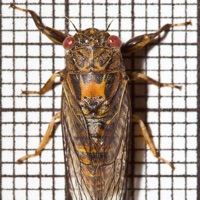
Megatibicen grossus (Fabricius, 1775) aka Northern Dusk Singing Cicada formerly Megatibicen auletes
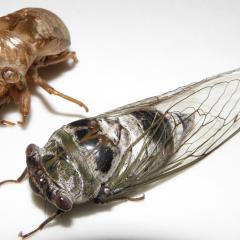
Megatibicen dorsatus (Say, 1825) aka Bush Cicada or Grand Western or Giant Grassland Cicada
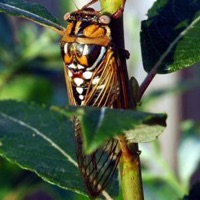
Megatibicen pronotalis pronotalis Davis, 1938
Megatibicen pronotalis walkeri Metcalf, 1955 aka Walker’s Cicada
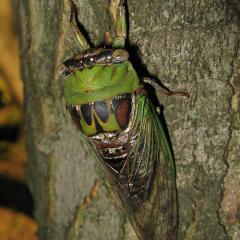
Neocicada hieroglyphica hieroglyphica (Say, 1830) aka Hieroglyphic Cicada

Neotibicen auriferus (Say, 1825) aka Plains Dog-day Cicada
Neotibicen pruinosus pruinosus (Say, 1825) aka Scissor(s) Grinder
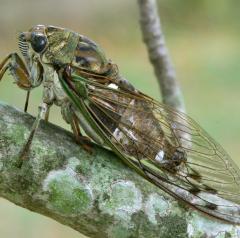
Neotibicen robinsonianus Davis, 1922 aka Robinson’s Annual Cicada or Robinson’s Cicada
Neotibicen tibicen tibicen (Linnaeus, 1758) aka Swamp Cicada, Morning Cicada
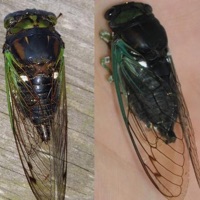
Okanagana synodica synodica (Say, 1825) aka Walking Cicada
Periodical cicadas of Missouri (MO):
Magicicada cassinii (Fisher, 1852) aka Cassini Periodical Cicada or 17-Year Cicada
These cicadas will next emerge in 2031 (Brood III) and 2032 (Brood IV). They often emerge 1 or 4 years earlier than expected.
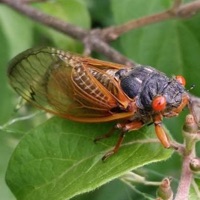
Magicicada neotredecim Marshall and Cooley, 2000 aka 13 Periodical Cicada or 13-Year Cicada
These cicadas will next emerge in 2024 (Brood XIX) and 2028 (Brood XXIII). They often emerge 1 or 4 years earlier than expected.
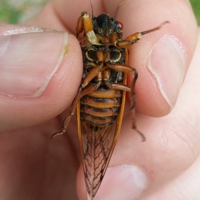
Magicicada septendecim (Linnaeus, 1758) aka Decim Periodical Cicada or Linnaeus’s 17-Year Cicada or 17-Year Cicada
These cicadas will next emerge in 2031 (Brood III) and 2032 (Brood IV). They often emerge 1 or 4 years earlier than expected.
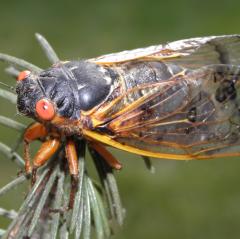
Magicicada septendecula Alexander and Moore, 1962 aka Decula Periodical Cicdada or 17-Year Cicada
These cicadas will next emerge in 2031 (Brood III) and 2032 (Brood IV). They often emerge 1 or 4 years earlier than expected.
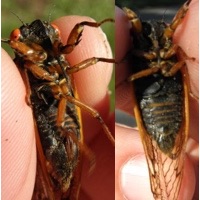
Magicicada tredecassini Alexander and Moore, 1962 aka 13-Year Cicada or 13-Year Cassini
These cicadas will next emerge in 2024 (Brood XIX) and 2028 (Brood XXIII). They often emerge 1 or 4 years earlier than expected.
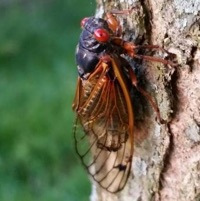
Magicicada tredecim (Walsh and Riley, 1868) aka 13-Year Cicada or 13-Year Decim
These cicadas will next emerge in 2024 (Brood XIX) and 2028 (Brood XXIII). They often emerge 1 or 4 years earlier than expected.
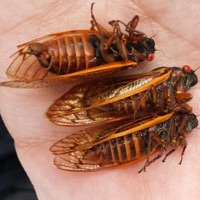
Magicicada tredecula Alexander and Moore, 1962 aka 13-Year Cicada or 13-Year Decula
These cicadas will next emerge in 2024 (Brood XIX) and 2028 (Brood XXIII). They often emerge 1 or 4 years earlier than expected.
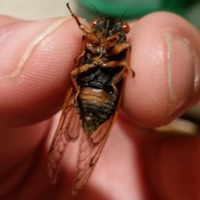
Related Articles
- Molting Magicicada by Kevin Anderson of Oakville Missouri
- Brood IV, the Kansan brood, will emerge in 2015
- Brood XXIII, the Lower Mississippi Valley brood, will emerge in 2015
- Brood III, The Iowan Brood, Will Emerge in 2014
- Periodical cicada Brood XIX (19) will emerge in 2024 in Fifteen States
Name and Location References:
- Full Binomial Names: ITIS.gov
- Common names & locations: BugGuide.net; iNaturalist.com; The Songs of Insects by Lang Elliott and Wil Herschberger; my personal memory.
- Locations: Biogeography of the Cicadas (Hemiptera: Cicadidae) of North America, North of Mexico by Allen F. Sanborn and Polly K. Phillips.
- List of species with MAPs: Biogeography of the Cicadas (Hemiptera: Cicadidae) of North America, North of Mexico [PDF] by Allen F. Sanborn and Polly K. Phillips. Download it once; treasure it forever.
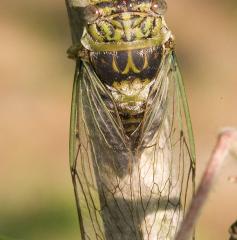
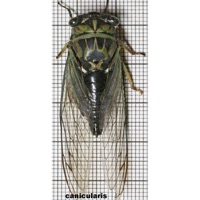
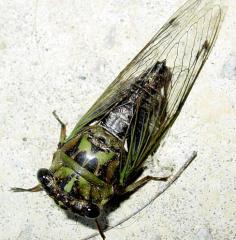
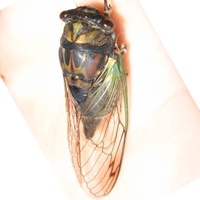
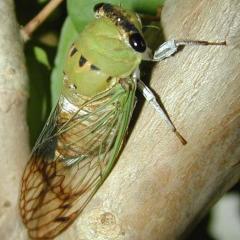
2 replies on “Common cicadas of Missouri”
When the time comes and the cicadas once again overwhelm my 2 acres, I’m thinking about gathering the cicadas, placing them in my freezer and saving them for the birds to feed upon this winter. Seems like it’d be excellent protein for some critter? I’ll have to Google what critters might eat cicadas.
I’m not sure what cicada it was, but in 2011, they emerged and wreaked havoc on my Bradford pear trees which are up in age as it is. Planted in the early 1980’s before anyone knew how invasive they’d become…It has taken about 9 years for them to look somewhat normal again. The cicadas cut open the bark on the branches, laid tiny little white eggs, scarred up my trees and nearly killed them. For 9 years, they did not bloom, and leaves turned orange then brown and fell off. This spring is the first year the leaves look normal…so far…..but it’s been a very cool sometimes cold spring. We’ll see when the temps warm up… 05/22/2020